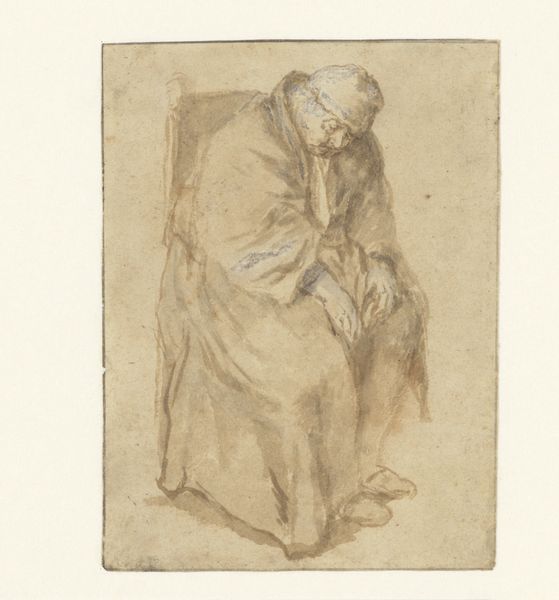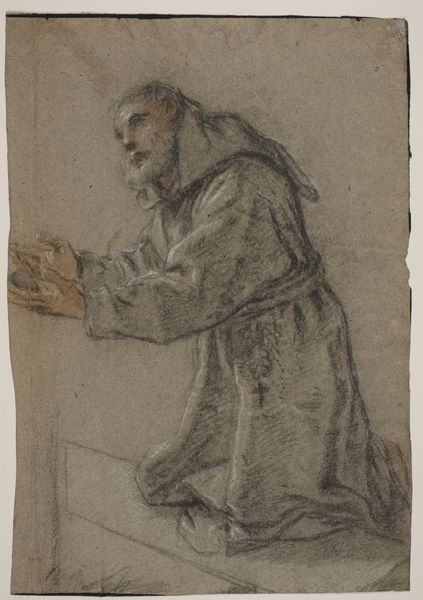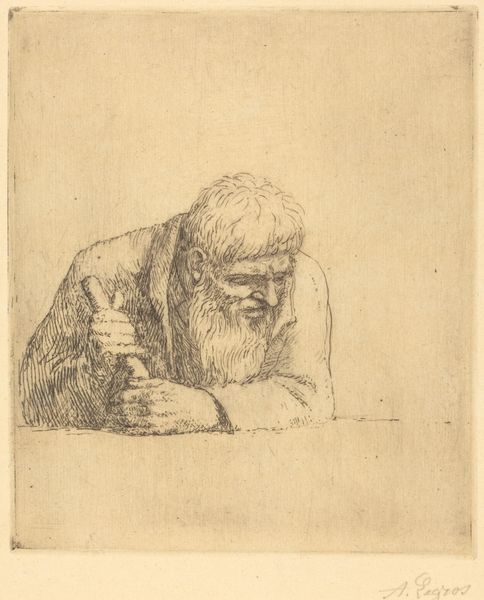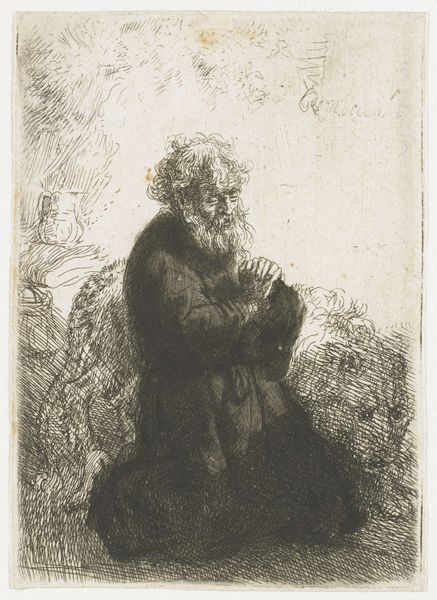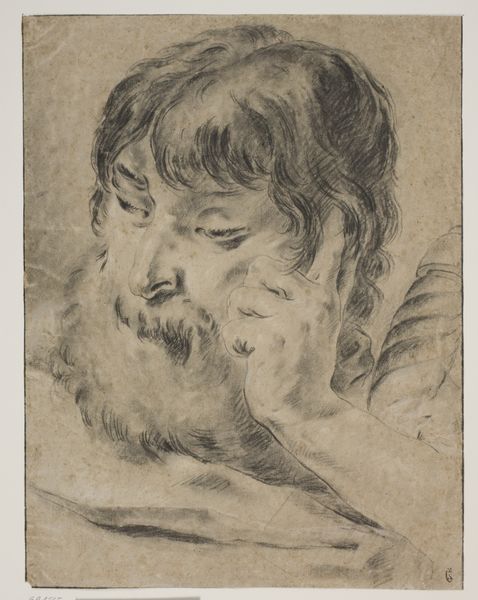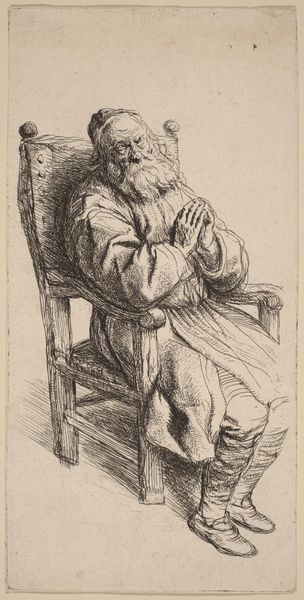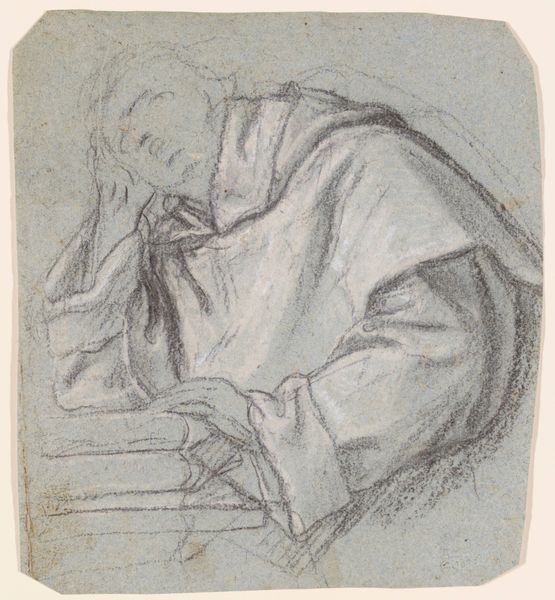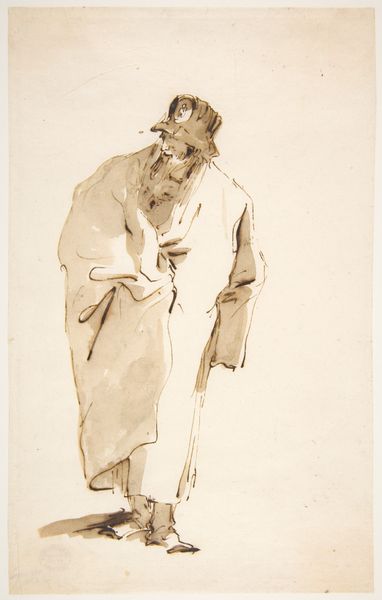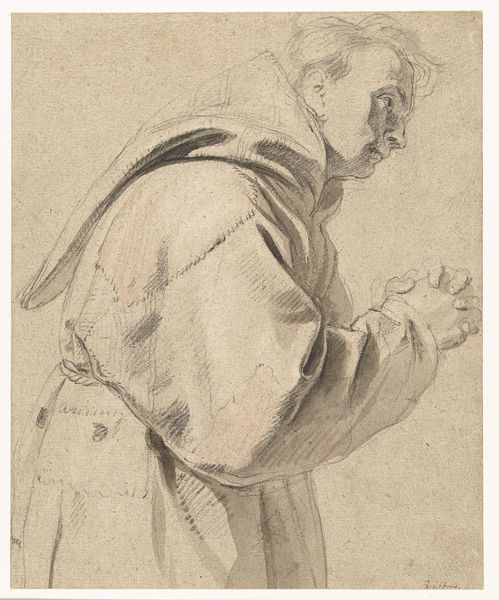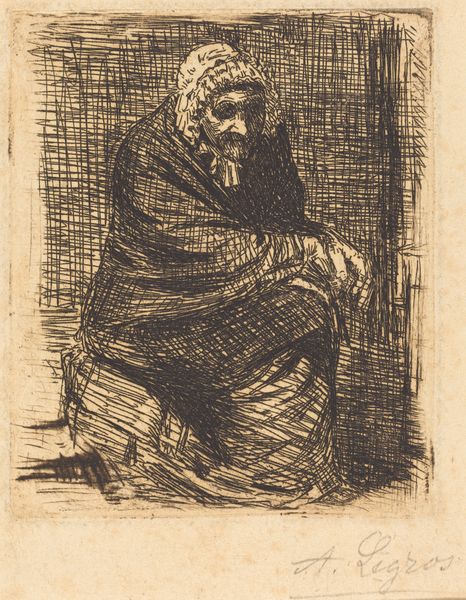
drawing, paper, ink, charcoal
#
portrait
#
drawing
#
baroque
#
charcoal drawing
#
paper
#
ink
#
pencil drawing
#
portrait drawing
#
genre-painting
#
charcoal
Dimensions: height 156 mm, width 113 mm
Copyright: Rijks Museum: Open Domain
Curator: This is a portrait drawing of Joost van den Vondel, created around 1678 or 1679 by Philips Koninck. The work, rendered in ink and charcoal, depicts the sitter in repose. Editor: He looks utterly defeated, doesn’t he? The weight of something...perhaps a great many things… seems to pull him downward. Curator: Indeed. Consider Koninck’s technique: the loose, gestural lines and the wash effects applied on paper create a sense of immediacy. We see the mark of the artist's hand, the swift decisions that construct the figure and the chair. The chair is particularly revealing. It isn’t ornate; it’s functional. Editor: Which tells us volumes about Vondel's lived experience at that moment. Was it merely an aging poet, or did it reflect larger social tensions brewing during the Dutch Golden Age's decline? It's easy to romanticize the era, but drawings such as this bring us down to earth. He's got this humble garment, simple surrounding, like everyday clothing we could recognize even now. It humanizes a figure that risks being just a symbol of wealth and cultural influence. Curator: Good point. The labor inherent in creating a drawn portrait is very different from that of painting. It invites a more intimate engagement between artist and subject, allowing us to see process, labor, and immediacy that can feel closer to Vondel's truth. It almost functions like a snapshot, really. Editor: This drawing offers not just a likeness, but an entry point for critical dialogue. Vondel, nearing the end of his life when Koninck captured this image, was already facing criticism for switching to Catholicism and for his provocative play ' Lucifer '. He's both an icon of the Republic and at the same time someone suffering scrutiny. What’s compelling is how this work freezes the nuances of social pressures and aging vulnerability in one place. Curator: So, from my perspective, it is so powerful precisely because of the visibility of labor—both Vondel's labor, in whatever he is doing with his hands and of course also the artists visible method. Editor: Well, yes. I like that we can think about him—both as an individual but also reflecting an inflection point in Dutch history, an era rife with identity and belief clashes. Curator: Precisely! Editor: What a charged yet somber reflection.
Comments
No comments
Be the first to comment and join the conversation on the ultimate creative platform.
